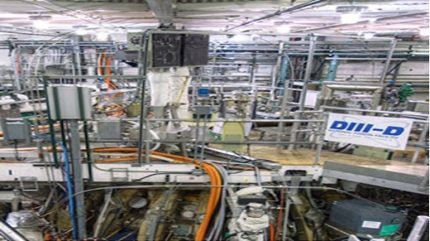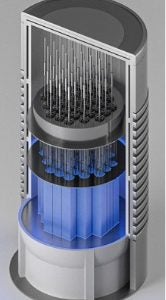
US General Atomics (GA) has been granted funding from the US Department of Energy (DOE) for fusion energy research. As part of the Fusion Innovative Research Engine (FIRE) Collaboratives, DOE has awarded more than $107m to six pioneering projects nationwide, including the GA-led Collaborative Target Injector Nexus for Experimental Development (TINEX). This is a programme dedicated to overcoming critical obstacles in developing and scaling inertial fusion power plants. GA’s partners in this initiative include SLAC National Accelerator Laboratory at Stanford University, Colorado State University, University of California San Diego, and Lawrence Livermore National Laboratory.
“We are excited to use the TINEX collaboration to bring fusion energy closer to commercialisation,” said Neil Alexander, Director of Inertial Fusion Energy for General Atomics Energy Group. The TINEX collaboration includes an industrial council of leading inertial fusion power plant companies, including Xcimer Energy, Marvel Fusion, Longview Energy Systems, LaserFusionX, HB11, Focused Energy, and Blue Laser Fusion. The council will guide partners in developing practical solutions to critical industry challenges, such as the fabrication and use of fusion fuel targets.
The project will also tackle other obstacles that may arise in a full-scale power plant, such as managing debris inside the chamber, mitigating damage to optical systems caused by capsule fragments, improving capsule resilience to high temperatures, and creating tracking sensors to accurately aim lasers at the fast-moving capsules.
In addition to leading TINEX, GA will participate in two other DOE-funded projects. The Fuel Cycle Fusion Innovative Research Engine, led by Savannah River National Laboratory (SRNL), will address environmental challenges in scaling up fusion power, particularly those related to the fuel cycle. The Blanket Neutron Test Fusion Innovative Research Engine, led by Idaho National Laboratory (INL), will focus on fusion blanket development. This is a crucial component of fusion power plant design that captures the energy and transports it from the fusion core for conversion into electricity. The project will enable scientists to test neutron impacts on blanket components and develop predictive modelling and simulation tools.
GA will provide engineering expertise and facility modelling for projects, utilising its Fusion Synthesis Engine (FUSE) program to establish operational fusion plant states that meet stakeholder requirements. In October 2024, GA made FUSE software available to others who want to design and build magnetic confinement fusion power plants.
“We are grateful to the DOE and our partners for their support and dedication to advancing these vital programs,” said Wayne Solomon, vice president of Magnetic Fusion Energy for the General Atomics Energy Group. “This funding propels two critical components forward that will help carry us closer to achieving a fully operational fusion power plant in the United States.”
GA operates the DIII-D National Fusion Facility in San Diego for DOE’s Office of Science. The DIII-D tokamak scientific user facility restarted in May 2024 after upgrades. They included a range of new diagnostic instruments as well as enhancements to the way that the plasma is heated. The DIII-D diagnostics set consists of over 50 diagnostic systems capable of making definitive measurements of plasma parameters in the core, edge/pedestal, and boundary regions of the plasma.
Since the 1980s, GA has maintained a comprehensive program of refurbishment, modernization, and system enhancements to keep DIII-D at the forefront of fusion science. This effort has become more demanding due to continually increasing complexity and capabilities, but it has made DIII-D one of the most productive tokamak facilities in the world, with an average availability of nearly 80%. GA is also pursuing a proactive improvement programme designed to promote DIII-D’s position as a state-of-the-art facility for the fusion community.






